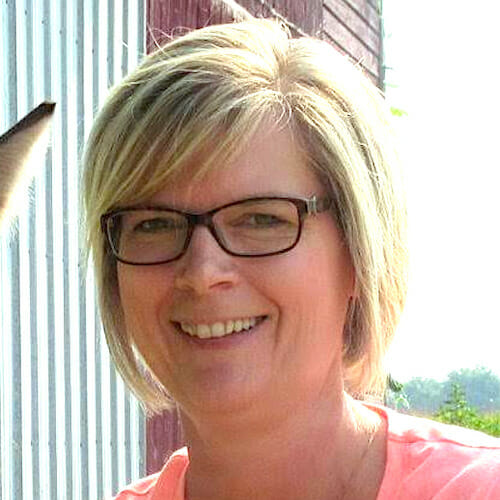
I’ve heard it said numerous times that no one could have imagined that an event of COVID-19’s magnitude would have occurred during our lifetimes. Many also say that because it could not have been imagined, we similarly could not have imagined how to respond to it.
As someone who has spent a career in people and culture strategy and leadership, I feel compelled to disagree. COVID-19 has been a challenge of epic proportions for any industry — and in aging services, we’ve been especially challenged.
But at its core, a challenge is a challenge. And the protocols with which we deal with any challenge remain unchanged: Put people first. And the rest falls into place.
I don’t pretend to have all the answers, and I don’t maintain that as an organization, we make the right decisions 100% of the time. But when we surveyed our team members recently about how they feel we’ve met their needs around COVID, we were fortunate enough to score pretty well.
In doing some thinking into why that might be, I put together a list of tactics I believe have worked for us in putting the logistical and emotional needs of our team members as a priority. We’ll leverage these and improve on them as we move forward. I’d love to start a conversation about the tactics that have worked for others in the industry as well.
First, acknowledge. When we began preparing for the likely effects of COVID-19 on our organization, any conversation around strategy cycled around to this truth: People wanted to know that we were aware of the potential ramifications of the situation and that we were thinking about how team members might be affected.
When team members came to us early in the year and asked, “Are you hearing about this coronavirus thing?” we were able to respond, “Yes. There’s a lot to learn, and we will begin communicating with you soon.” We formed a task force during the early days, and we’ve continued to meet regularly to report out, share ideas and make sure we’re on course.
Then, prepare to change course. That may seem like a strange tactic, but the reality is that none of us had experienced a pandemic. Nor had any of our industry partners or advisers. So we knew that early guidance likely would be revised as we collectively discovered more about how the virus was manifesting.
Case in point: notifications. The recommendations we received early on around how to notify residents of a case of COVID-19 in a community differed from those we received later. Because we had made a point to be flexible, we didn’t become mired in, “That’s not the way we were told to do it!” We’ve evolved, and we’ve acted quickly to implement guidance as it has become available.
Over-inform. We’ve wondered aloud from time to time whether team members are tired of hearing from us, but we had decided early on to err on the side of communicating too often, even if sometimes we only had partial information. So far, that tactic seems to have worked well. We carved out a section of our public website to devote to COVID, and we included secured pages for team members and leaders. We created a living document — a list of frequently asked questions — then posted it to the leader and team member sites and updated it daily.
Our executive directors or administrators communicate weekly in writing or by video to residents, clients, family members and team members, and our CEO writes on a biweekly basis to all audiences. In addition, there are daily departmental communications and as-needed communications to organizational leadership. And most recently, we published on our public site the numbers of COVID-19 cases in each of our communities. Those numbers are updated daily. Transparency has helped instill confidence in leadership, provide facts rather than supposition, and reduce fear.
Zoom in and zoom out. Some of our communications dip pretty far into the weeds, but anticipating and addressing even those detailed questions lets team members know that we understand the issues that likely are concerning them. It also helps prevent phone calls and emails to our community and service line leaders, who are busy with so many other accountabilities.
As leaders, we also have to understand how our shorter-term decisions will have an effect on our longer-term success. Although our team members need answers for today, we also must be thinking forward together about what our organization will look like on the other side of the crisis.
Empathize, but prepare. No one likes to be the bearer of bad news, but we decided not to allow collective empathy to prevent us from making team members aware that the effects of the virus could influence the way we do business. We let them know that although we’d do everything in our power to avoid reductions in force, we couldn’t promise those would not occur. We promised to provide team members with as much notice as possible, and we let them know what their options would be if their jobs were impacted.
Think out loud. Again, this experience has been a new one for all of us. Since the novel coronavirus became part of our reality, we as leaders have leaned on one another: “Am I thinking about this the right way?” “Does this make sense?” “What have I forgotten?”
The saying is true: Two heads (or eight or 12 or 19) really are better than one. Leveraging each other’s strengths and taking advantage of the collective wisdom of the team have allowed us to lead well, together.
Don’t be afraid of the joy. I think that’s the biggest and least expected tactic I’ll fall back on in any future organizational challenge. As has been the case with many organizations, I’m sure, the “silver lining” to this challenge has been the way communities have come together and how words of support have been spoken far more often, and with much more volume and fervor, than words of dissent.
Team members, residents, and family members speak more freely of our organization’s mission, vision and values. We reach out to help another. And we celebrate the many ways our team members create positive moments and experiences for those we serve — and each other. We worry together, and we cry together — and collectively, we seem to want to extend support as much as we yearn to feel it.
As is the case with everyone, I’m sure, my preference would have been to avoid this chapter in our history altogether. But as we recover from this time and I begin to look back, I know I will feel an overwhelming sense of gratitude.
What has worked well for your organization in leading team members through this challenge? What would you do differently? I would love for us to continue to learn from one another. Please comment below or reach out to me anytime to continue the conversation!


